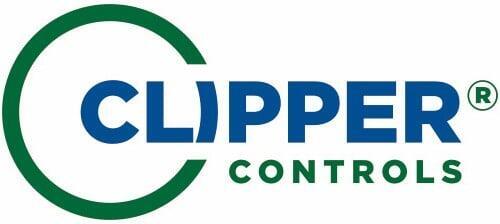
Power Monitoring Equipment
Clipper Controls offers high-performance power monitoring equipment engineered for accurate, reliable electrical measurement across demanding industrial and commercial environments. Our product range supports applications such as energy usage tracking, load analysis, and system protection in industries including manufacturing, utilities, data centers, transportation, and facility management. Featuring trusted technologies from leading manufacturers, our solutions include transducers, transmitters, transformers, and accessories designed to deliver consistent performance, simplify integration, and ensure compliance with industry standards.
AC Power Transducers
Accurate AC power measurement is critical for effective energy management, system optimization, and power quality analysis. We offer a comprehensive selection of AC power transducers designed to convert electrical signals into standardized analog or digital outputs for monitoring and control systems. Our lineup includes watt, VAR, and watt/VAR transducers, as well as current, voltage, and phase angle transducers—each tailored for precise measurement of specific parameters within AC power systems.
These transducers support a wide range of single-phase and three-phase applications, including motor load monitoring, equipment efficiency tracking, and utility sub-metering. Built for dependable performance in industrial and commercial environments, many models feature isolated outputs, compact enclosures, and flexible mounting options. Whether you’re integrating into a new system or upgrading legacy equipment, our AC power transducers provide the accuracy and reliability needed for modern energy applications.
AC Watt Transducer
Application:AC watt transducers provide precise measurement of real power (watts) in single-phase or three-phase AC electrical systems. By converting power consumption into an analog or digital output signal, these transducers enable real-time monitoring and control of energy usage in applications such as motor load analysis, building automation systems, industrial equipment monitoring, and sub-metering. They are essential for identifying power inefficiencies, optimizing load distribution, and supporting energy management strategies in commercial and industrial facilities.
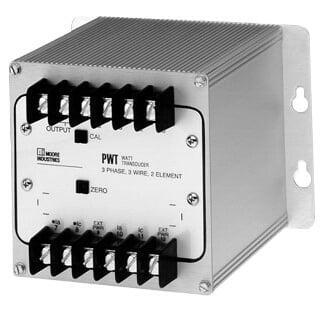
Watt/VAR Transducer
Application: Watt/VAR transducers simultaneously measure real power (watts) and reactive power (VARs) in AC systems, providing a complete picture of power flow and system efficiency. These transducers are used in applications where both active and reactive power data are needed for load balancing, power factor correction, and utility demand monitoring. Common uses include power distribution panels, motor control centers, and energy management systems in manufacturing plants, commercial buildings, and utility substations. Dual-output capability allows integration into SCADA or building automation systems for comprehensive energy analysis.
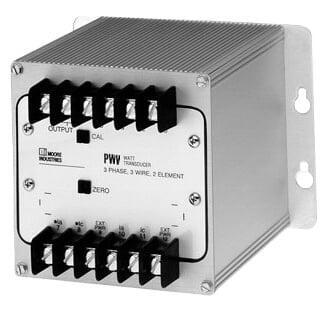
VAR Transducer
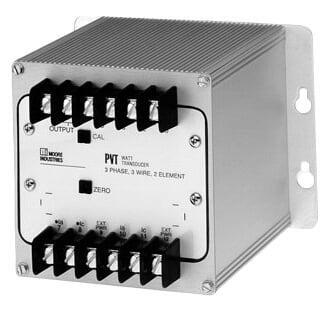
AC Current Transducer
Application: AC current transducers measure alternating current in electrical circuits and convert it into a standardized output signal suitable for data acquisition, control systems, and monitoring equipment. These transducers are essential for tracking load conditions, detecting overcurrent events, and monitoring the performance of motors, pumps, heaters, and other critical equipment. Widely used in industrial automation, building management systems, and energy monitoring applications, AC current transducers help ensure system safety, optimize energy usage, and support preventive maintenance strategies.
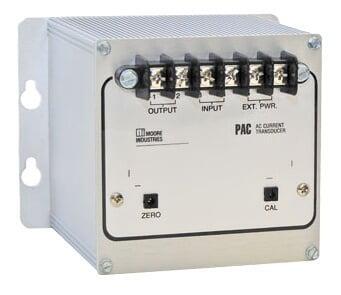
AC Voltage Transducer
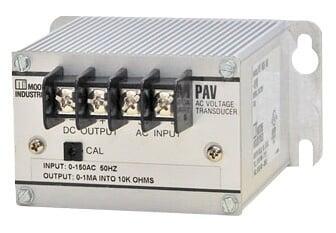
Phase Angle Transducer
Application: Phase angle transducers measure the phase displacement between voltage and current in AC power systems, converting this relationship into an analog or digital output signal. This measurement is vital for analyzing power factor, detecting load imbalances, and diagnosing system inefficiencies. Common applications include motor performance monitoring, synchronization of generators, and power quality assessment in industrial plants, utility substations, and commercial facilities. By providing insight into the alignment of current and voltage waveforms, phase angle transducers support improved system efficiency and operational stability.
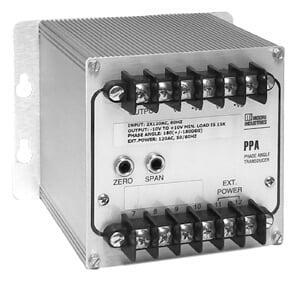
Talk to an Expert
Frequency Transmitters
Reliable frequency measurement is essential for maintaining the stability and performance of AC power systems. Our frequency transmitters accurately detect the frequency of voltage signals and convert this data into analog or digital outputs for integration with control and monitoring systems. These devices are critical in applications where precise frequency tracking is required, such as generator synchronization, grid interconnection, motor speed monitoring, and power quality analysis.
Designed for both single-phase and three-phase systems, our frequency transmitters offer fast response times, high accuracy, and rugged construction for dependable operation. Whether used in power plants, substations, industrial automation, or commercial facilities, these transmitters help ensure consistent system performance and early detection of abnormal conditions.
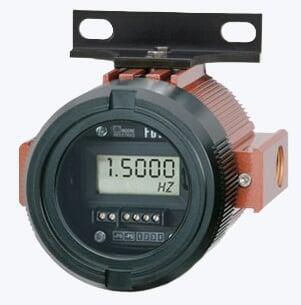
Talk to an Expert
Power Accessories
Potential Transformers (PTs)
Application: Potential transformers (PTs), also known as voltage transformers, are used to step down high AC voltages to safer, standardized levels suitable for use with metering and monitoring equipment. They provide accurate voltage scaling and electrical isolation, ensuring the protection of instruments and personnel while maintaining measurement precision. PTs are commonly used in substations, switchgear, and industrial power distribution systems to monitor voltage levels, support protective relaying, and facilitate grid synchronization. Their precise voltage conversion is critical for applications requiring high-accuracy power and energy measurements.
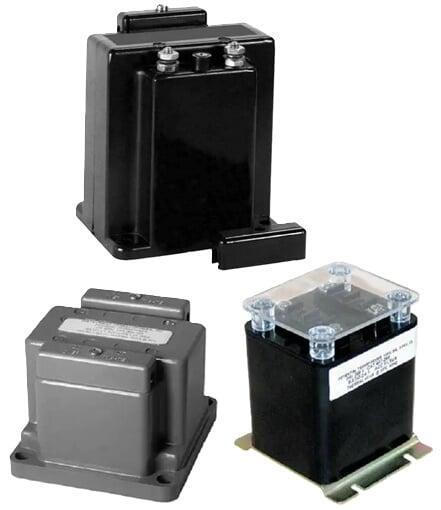
Current Transformers (CTs)
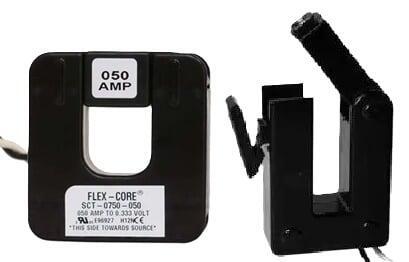
Shunts
Application: Shunts are precision resistive elements used to convert high DC current into a low-level voltage signal that can be easily measured by meters, transducers, or data acquisition systems. They provide a reliable, passive method for current measurement in applications such as battery monitoring, power supply testing, welding equipment, and DC motor control. Shunts are ideal for environments where compact size, high accuracy, and minimal power loss are essential. Available in a range of current ratings and configurations, they offer durable, long-term performance in both industrial and laboratory settings.
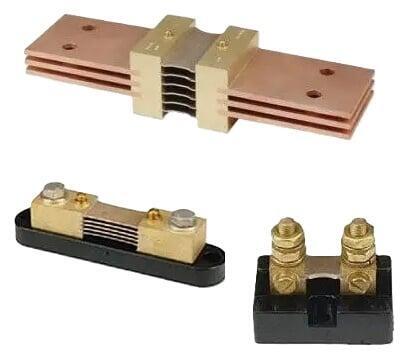
Talk to an Expert
Surge Suppressors
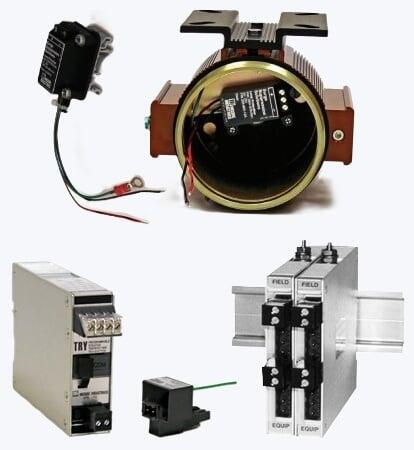
Talk to an Expert
Transformer Monitors
Transformer monitors provide continuous oversight of transformer health and performance, helping operators detect issues early and prevent costly failures. These devices track key parameters such as temperature, load current, oil level, dissolved gases, and insulation condition to ensure safe and efficient transformer operation. By delivering real-time data and alerts, transformer monitors support condition-based maintenance, extend equipment life, and improve system reliability.
Ideal for use in substations, industrial power systems, and utility grids, transformer monitors can be integrated into SCADA or asset management platforms for centralized visibility and control. With features such as remote monitoring, data logging, and threshold-based alarms, these solutions enable proactive management of critical power infrastructure.
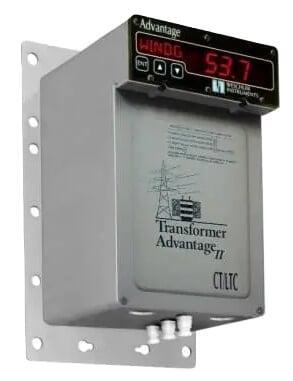
Talk to an Expert
Digital Power Meters
Digital power meters provide real-time measurement and display of key electrical parameters such as voltage, current, power (watts), energy consumption (kWh), power factor, frequency, and more. Designed for precision and ease of use, these meters offer a clear digital interface and are often equipped with communication capabilities for remote monitoring and data logging. They are essential tools for energy management, load analysis, and system diagnostics in commercial buildings, industrial facilities, and utility environments.
Available in panel-mount, DIN-rail, and portable configurations, digital power meters support both single-phase and three-phase systems. Many models offer advanced features such as multi-function displays, programmable alarms, and Modbus or Ethernet connectivity, allowing seamless integration into building automation systems or SCADA platforms. With high accuracy and user-friendly interfaces, digital power meters help operators track energy usage, optimize system performance, and ensure regulatory compliance.
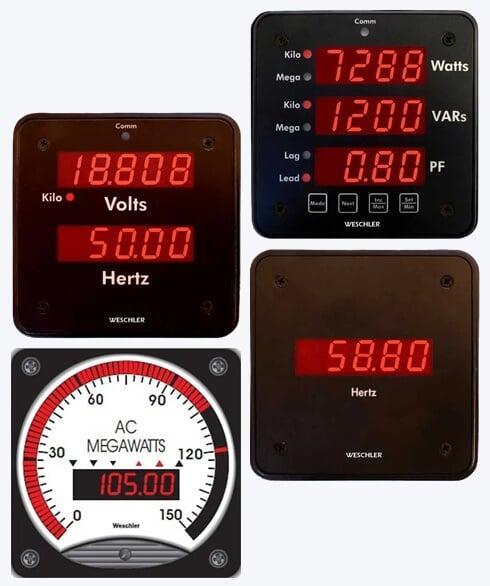
Talk to an Expert
Need Help?
Our Crew is Here To Serve You!
Power Monitoring Applications
Industrial Manufacturing Applications
Instrumentation Used: AC current transducers, AC watt transducers, digital power meters
Problem Solved / Opportunity Created: Power monitoring helps manufacturers identify energy-intensive equipment and inefficient load conditions. By continuously tracking current and power consumption across production lines, facilities can reduce downtime, prevent overloads, and optimize energy usage for cost savings and increased throughput.
Data Center Applications
Instrumentation Used: Digital power meters, voltage transducers, frequency transmitters, surge suppressors
Problem Solved / Opportunity Created: Data centers require reliable, high-quality power to ensure uptime. Power monitoring instrumentation tracks key parameters like voltage, frequency, and energy use at distribution panels and server racks. This enables proactive response to voltage sags, frequency drift, or abnormal load behaviors, reducing the risk of outages and optimizing PUE (Power Usage Effectiveness).
Utilities and Power Generation Applications
Instrumentation Used: Frequency transmitters, phase angle transducers, potential transformers, current transformers
Problem Solved / Opportunity Created: Utilities must ensure synchronization between generators and the grid. Phase angle and frequency monitoring ensures proper alignment of voltage and current waveforms, while PTs and CTs provide accurate inputs to protection and metering equipment. This reduces the risk of grid instability and allows safe load balancing across the network.
Water and Wastewater Treatment Applications
Instrumentation Used: AC current transducers, VAR transducers, watt/VAR transducers
Problem Solved / Opportunity Created: Treatment facilities rely heavily on motors and pumps, which can draw excess current under stress or wear. Monitoring real and reactive power reveals inefficiencies, mechanical issues, or impending motor failures. Operators can schedule maintenance before a breakdown occurs, reducing unplanned downtime and extending equipment life.
Commercial Building Applications
Instrumentation Used: Digital power meters, AC watt transducers, CTs, PTs
Problem Solved / Opportunity Created: Facility managers use sub-metering to track energy consumption by floor, tenant, or equipment type. Accurate power data supports tenant billing, energy efficiency initiatives, and compliance with green building standards. It also enables demand-side management to reduce peak loads and associated costs.
Oil and Gas Industry Applications
Instrumentation Used: Explosion-rated power transducers, transformer monitors, surge suppressors
Problem Solved / Opportunity Created: Oil and gas operations must monitor power loads in remote or hazardous locations to prevent equipment failures and ensure safety. Power monitoring equipment designed for harsh conditions helps detect abnormalities early, manage loads across drilling or refining operations, and protect sensitive electronics from surge damage.
Renewable Energy (Solar & Wind)
Instrumentation Used: Voltage transducers, frequency transmitters, power meters
Problem Solved / Opportunity Created: In solar and wind farms, maintaining grid compatibility is essential. Power monitoring equipment ensures that inverter output is stable, within voltage and frequency limits, and efficiently integrated into the grid. Operators use this data to maximize output, ensure compliance with utility standards, and support predictive maintenance.
Terms & Definitions
- AC Current Transducer
- Converts AC current into a proportional analog or digital signal for use in monitoring and control systems.
- AC Voltage Transducer
- Measures AC voltage levels and provides a standardized output for data acquisition and system monitoring.
- AC Watt Transducer
- Measures real power (watts) in AC systems and outputs a signal for use in energy monitoring and control applications.
- Apparent Power
- The product of voltage and current in an AC circuit, measured in volt-amperes (VA), combining real and reactive power.
- Burden
- The load, usually expressed in ohms or VA, connected to the secondary winding of a current or voltage transformer.
- Current Transformer (CT)
- Scales high current levels down to safe, measurable values and provides isolation for connected meters and protection devices.
- Digital Power Meter
- An electronic device that digitally displays and records electrical parameters such as voltage, current, power, and energy usage.
- Frequency Transmitter
- Detects and outputs the frequency of an AC signal, allowing real-time monitoring and control of electrical systems.
- Ground Fault
- An unintentional connection between an energized conductor and ground, often monitored for safety and protection purposes.
- Harmonics
- Voltage or current waveforms that are integer multiples of the fundamental frequency, potentially causing distortion and equipment issues.
- Phase Angle Transducer
- Measures the angular difference between voltage and current waveforms, helping evaluate power factor and system balance.
- Potential Transformer (PT)
- Steps down high AC voltage to a lower level for safe and accurate metering and protection in monitoring systems.
- Power Factor
- The ratio of real power to apparent power, indicating how efficiently electrical power is being converted into useful work.
- Reactive Power (VAR)
- Power that oscillates between the source and load, supporting magnetic fields in inductive loads but not performing real work.
- RMS (Root Mean Square)
- A mathematical way of expressing the effective value of an AC voltage or current, equivalent to a DC value that delivers the same power.
- Shunt
- A low-resistance component used to measure current in DC systems by producing a proportional voltage drop.
- Surge Suppressor
- Protects equipment from voltage spikes by limiting transient overvoltages, commonly caused by lightning or switching events.
- Transformer Monitor
- Continuously tracks transformer health indicators such as temperature, oil levels, and load conditions to prevent failures.
- VAR Transducer
- Measures reactive power in AC systems and outputs a signal for monitoring purposes, aiding in power factor correction strategies.
- Watt/VAR Transducer
- Simultaneously measures real and reactive power, providing a dual-output signal for advanced energy analysis and system balancing.
Frequently Asked Questions
Yes. Our team offers expert guidance to help you select the most appropriate transducers, meters, transformers, or accessories for your application. Whether you're monitoring a single load or implementing facility-wide energy management, we’ll recommend reliable, compatible solutions tailored to your system requirements.
A watt transducer measures real power (watts) only, while a watt/VAR transducer measures both real power and reactive power (VARs) simultaneously. Watt/VAR transducers are ideal for applications where complete power factor analysis or load balancing is needed.
CTs are used for measuring AC current, especially at high voltage or current levels, while shunts are typically used in DC applications. CTs provide electrical isolation and are safer for high-power systems, whereas shunts are simpler and more compact for low-voltage, high-current DC circuits.
Yes. Many digital power meters are designed to support both single-phase and three-phase configurations. Always check the meter’s specifications to ensure it matches your system’s wiring and load requirements.
A phase angle transducer measures the angular displacement between current and voltage waveforms. This data is useful for monitoring power factor, detecting load imbalances, and improving energy efficiency in AC power systems.
Yes. Most power transducers require an auxiliary power supply to operate, typically 24 VDC or 120 VAC, depending on the model. This power is used to energize the internal electronics and generate the output signal.
Surge suppressors protect electrical systems and equipment from transient overvoltages caused by lightning strikes, switching events, or utility disturbances. They help extend equipment life and prevent unexpected downtime due to voltage spikes.
Yes. Many transformer monitors are equipped with communication protocols like Modbus or Ethernet, allowing seamless integration into SCADA and asset management platforms for centralized monitoring and control.
